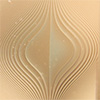| Aug 23, 2024 |
|
(Nanowerk News) Researchers at International Iberian Nanotechnology Laboratory (INL), in collaboration with Bosch Car Multimedia and Bosch Security Systems, recently published an article in Computer Physics Communications (“pyMOE: Mask design and modeling for micro optical elements and flat optics”), where they introduce a new open-source Python software that democratises the design and modelling of micro optical elements and flat optics.
|
|
Micro optics can replace bulky traditional optics with sleek, micro and nanostructured alternatives, enabling more advanced optical functions. These components, produced with semiconductor microfabrication techniques, require precise binary or multilevel lithography masks to translate computed designs into physical components. However, no existing tool offers a complete solution for designing, simulating, and generating these masks – until now.
|
|
INL researchers developed an open-source software package to fill this gap, by providing an end-to-end solution that allows users to design, simulate, and generate lithography masks for micro optical elements.
|
|
João Cunha, a Marie Skłodowska-Curie Postdoctoral Fellow at INL, explains “with this new development it is possible to create masks directly from your desired optical functions, and export them as binary or multilevel lithography files (such as GDSII and DXF) compatible with standard microfabrication tools.”
|
|
“This package addressed the challenge of producing surface relief diffractive optics by discretisation of continuous topographies into mask layers, required for specific micro and nanofabrication approaches, such as grayscale lithography processes we implemented at INL. It turned out more researchers were facing a similar challenge, and so we have created an open-source software tool available to everyone which we would have liked to have available when initially tackled this problem”, João concludes.
|
|
“The software package already includes generators for common optical components like Fresnel lenses, or more complex ones such as Alvarez lenses, as well as tools for creating hologram phase masks for pattern projection using the Gerchberg-Saxton algorithm, all of which were inspired by challenges faced by our industrial partners. The package allows to go all way from the design and validation of optical properties through simulation, to the generation of lithography-ready masks, greatly accelerating the development of new complex diffractive micro optics”, adds Diogo Aguiam, Staff Researcher at INL.
|
|
But this new software goes beyond just design. It includes advanced simulation tools, enabling accurate simulation and validation of optical fields in both near- and far-field ranges, ensuring that designs perform as expected in real-world scenarios. The developed software at INL is a versatile and comprehensive tool that simplifies the entire process of creating micro optical components, from concept to production, making it invaluable for researchers and engineers in the field of micro optics.
|

